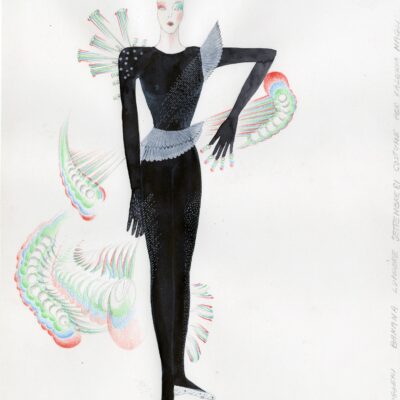
Designers 08.09.2022
26.03.2023
designfashion archiveItalian fashion
Introducing our new partner, preserving & making accessible more than 80000 fashion heritage records since the 1970s
CSAC Centro Studi e Archivio della Comunicazione is a structure of the University of Parma created by Arturo Carlo Quintavalle in 1968 within the then Institute of Art History.
Since its early years, the center has aimed at establishing a collection of art, photographs, architectural drawings, design, fashion and graphics, organizing exhibitions and publishing catalogues. Its main institutional tasks are the collection, conservation, cataloging and promotion of cultural heritage. Today CSAC is based in the Valserena Abbey in Paradigna (Parma) and holds over 12 million pieces organized into five sections called Art, Photography, Media, Project and Entertainment.
CSAC proposes a method of investigation that is based on reading the design phase of the work as the one that best allows an analysis of ideologies and their manifestations. The critical contributions and exhibitions set up since the opening of the center are based on this research method, resulting from the unified cataloging-basis for all areas and from the study of the collections.
The Fashion Archive was born at the end of the Seventies, when the collection of the first documents began. It was inaugurated in 1981 with the exhibition and catalog dedicated to the designer Brunetta Mateldi, who donated 1.224 drawings to the university, mostly the result of her collaboration with Camilla Cederna for the column Lato Debole – The weak side, published between 1957 and 1976 on the magazine L’Espresso. The analysis is conducted by applying a method according to which:
fashion is not the dress but the function of the dress within a certain, precise culture; fashion is not the single fact but a system of complex interrelated facts. (A.C. Quintavalle, 1981).
Dating back to 1984, is the donation of 6.591 pieces relating to the activity of the Fontana Sisters delivered to the center by Giovanna and Micol Fontana, which allows studies to be directed to Roman high fashion after the Second World War and reconstruct the operational practice of the ateliers.
On the occasion of the exhibition dedicated to the Fontana Sisters (1984), CSAC also organized the moment of collective reflection Moda Media Storia, which later merged into a catalog published in 1990, which brings together scholars of various disciplines, journalists and designers. Moda Media Storia represents a founding moment for for the plurality of voices and points of view, identifying the cornerstones of the center’s fashion research and maintaining a continuous dialogue with donors.
The 1987 Italian Fashion Designing 1945-1980 exhibition and catalog mark the return on the research conducted on fashion design, codifying it as a genre. The project was followed by the study dedicated to Walter Albini (1988), who was one of the first to propose the idea of total look and a modern system of designing in dialogue with the industry that anticipate the international affirmation of Italian stilismo.
In the following years, numerous fashion foundations became part of the CSAC collections, including those of Maria Antonelli, Irene Galitzine, Emilio Federico Schuberth, Giorgio Armani, Gianfranco Ferré, Franco Moschino, Carlo Palazzi, Mariuccia Mandelli (Krizia), Cinzia Ruggeri and Gianni Versace.
Today the Fashion Archive is made up of approximately 80.000 pieces, including fashion plates, drawings, sketches, dresses, accessories and magazines, representative of the developments of haute couture, boutique fashion and prêt-à-porter in Italy from the 1940s to the threshold of 2000s.